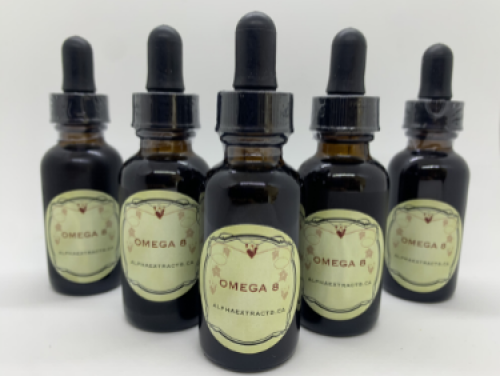The research, conducted by scientists at the University of Michigan Addiction Center, found that one in five reported having driven while “very high” within the past six months. Michigan has the second highest number of medical marijuana patients for a state, next to California. In November, Michigan voters approved the use of recreational marijuana.
“To know that folks are driving and may be impaired from using their medical marijuana is concerning from a public health perspective,” says Erin E. Bonar, Ph.D., the study’s lead author and a licensed clinical psychologist and assistant professor at the University of Michigan's Department of Psychiatry. “We prefer to not have substances that affect our driving on board when we get in a car.”
Researchers surveyed 790 medical marijuana patients in Michigan who were seeking recertification for chronic pain during 2014 and 2015. The survey asked respondents about their driving habits for the past six months, and 56.4 percent reported having driven within two hours of using marijuana. Nearly 51 percent reported they drove while a “little high,” while 21.5 percent said they were “very high” at the time.
The results follows a recent study published by the Insurance Institute for Highway Safety (IIHS) and Highway Loss Data Institute (HLDI), which found motor vehicle crashes were up 6 percent in four states where recreational marijuana is legal—Colorado, Nevada, Oregon, and Washington—compared with four neighboring states where marijuana is restricted or illegal. Whether marijuana is to blame for the uptick remains unclear, the study authors said at the time.
Bonar called the findings of her study “troubling." She says that additional research is needed to better understand how long after using it may be safe for marijuana users to get behind the wheel.
Paul Armentano, deputy director of the National Organization for the Reform of Marijuana Laws (NORML), an advocacy group that works toward the legalization of recreational marijuana, says his group advises that adults "refrain from driving for a period of several hours immediately following their cannabis use.”
“Just like with many other medicines such as antihistamines, cannabis can influence psychomotor performance—particularly in more naive users,” Armentano says.
But Armentano cites studies that show more habitual consumers, like medical marijuana patients, become acclimated to the effects over time. That includes a 2012 study in Deutsches Ärzteblatt International, a German medical journal, that found patients who take “cannabinoids at a constant dosage over an extensive period of time often develop tolerance to the impairment of psychomotor performance, so that they can drive vehicles safely.”
Separately, a February 2017 study in the American Journal of Public Health, found that states with medical marijuana laws had lower traffic fatality rates than states without one on the books.
“Medical marijuana laws were associated with immediate reductions in traffic fatalities in those aged 15 to 24 and 25 to 44 years, and with additional yearly gradual reductions in those aged 25 to 44 years,” according to the study. The researchers suggest this could be "related to lower levels of alcohol-impaired driving behavior" in states that have passed medical marijuana laws.
THC Levels Complicate Research
Tatiana Ogourtsova, Ph.D., a postdoctoral fellow who works at the University of British Columbia’s Faculty of Medicine, Paediatrics, also says the relationship between medical marijuana use and driving was complicated.
Ogourtsova co-authored a study published in October that found marijuana causes an increased risk of crashes among young drivers, even five hours after they use marijuana. But, she says, “We need to be very careful on how we extrapolate this to other populations, including medicinal users,” who might have higher tolerance to other products.
Ogourtsova’s team had recreational marijuana users test a driving simulator, after smoking a typical dose of marijuana. Asked how confident they were in driving, nearly 80 percent reported they didn’t feel safe, Ogourtsova says.
“They had this actually adequate self-awareness of their abilities following their use of cannabis,” she says. Complex driving tasks became far more difficult after smoking marijuana, she adds.
“The road is always unexpected, anything can happen on the road, drivers need a very quick and accurate response in order to maneuver safely.”
Research into driving while impaired is complicated by the variables associated with THC (tetrahydrocannabinol), the psychoactive component of cannabis.
“We’ve had a lot of change in the marijuana that’s available to people today,” says Bonar, the University of Michigan researcher, as today's products often have much higher amounts of THC, making them more potent. The current market offers consumers several ways to use marijuana, for one thing, and those devices affect people differently.
And that market is growing rapidly: Federal law still prohibits the possession, use, or sale of recreational and medical marijuana, but now 10 states and Washington, D.C., allow recreational use, while another 23 allow medical marijuana. Canada legalized recreational marijuana in 2018, only the second country in the world to do so.
How law enforcement determines whether a driver is impaired by marijuana also remains a complicated and unresolved issue.
More Research Is Needed
Without a clear understanding of the risks of driving while stoned, researchers advise marijuana users to exercise caution before getting behind the wheel after using.
For example, Benjamin Hansen is an economist at the University of Oregon whose research suggests that marijuana users are no more dangerous while driving than are sober ones. But even he says, "I don't think people should drive high." Bonar, the author of the current study, agrees, calling staying off the road the "safest policy" for now.
And until there's more research on the topic, experts say it's difficult to offer more precise advise.
“There’s not really a set amount of time we could say to someone that they’re safe to drive after,” she says. “It’s so dependent on what they’re using, how much they’re using, the way in which they’re using it that it’s just really hard to give that recommendation.”
“I think that’s the main thing,” she says. “We don’t just have the information yet to give people.”
Omega8 Copied By Many But Never Duplicated !!!

Omega8 truly miraculous | alphaExtract (alphaextracts.ca)


